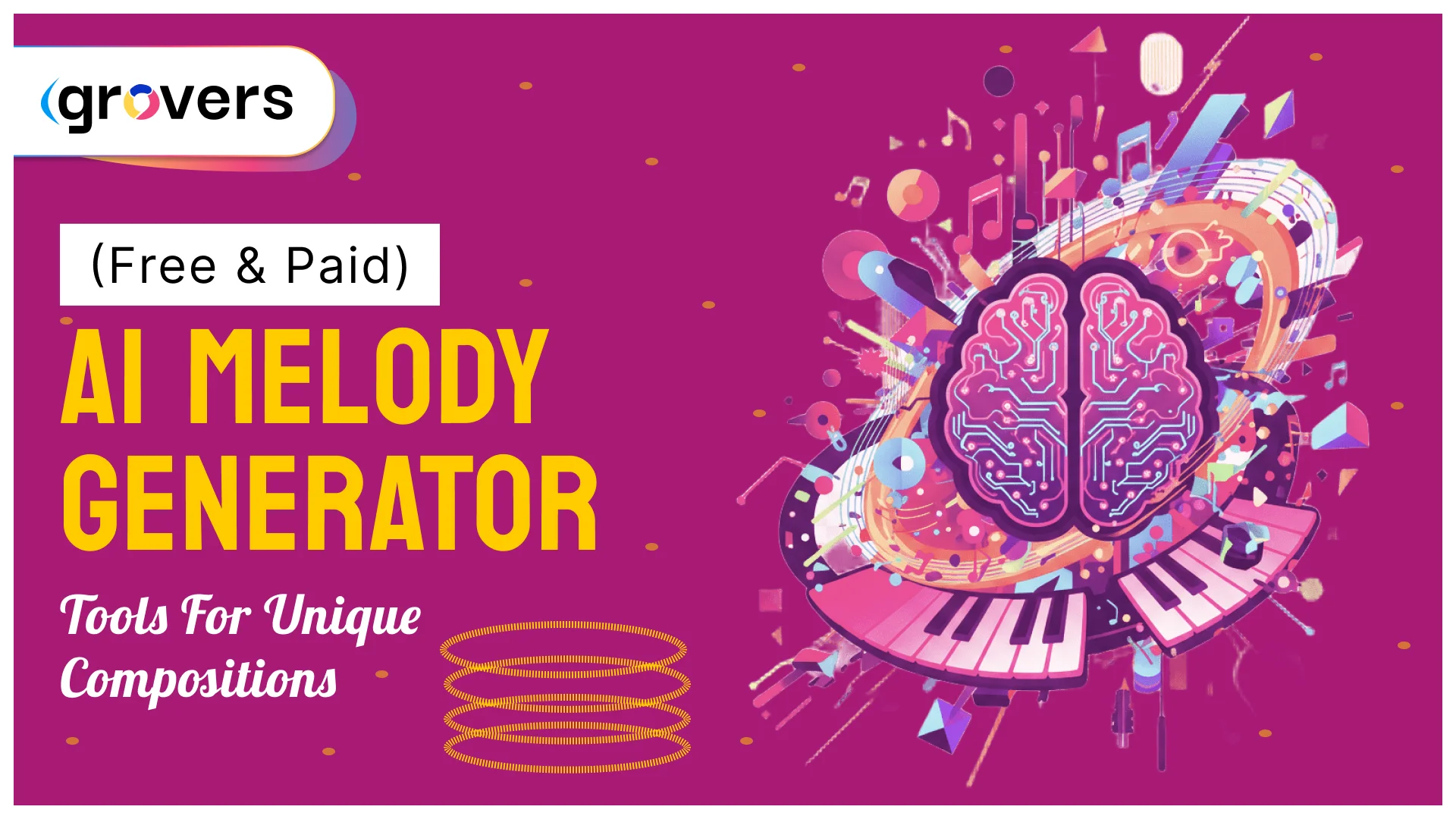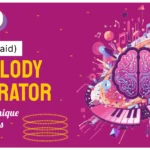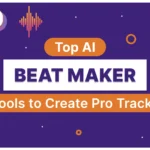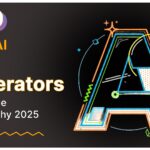Creating music previously took years of schooling. Now, with any internet connection, one can create original songs in minutes. AI melody creation platforms have revolutionized the process for content producers, artists, and hobbyists who require quality music at an affordable price without spending months studying music theory.
The AI tools of 2025 are astonishingly adept. Some create melodies from words, others operate on chord progressions, and a few will build full arrangements with minimal effort. This guide deconstructs all that you need to know about AI melody generators, from which tools truly provide results to which ones are a waste of time.
What Makes AI Melody Generators Different in 2025
The technology used for melody generation has come a long way. The old generations created random notes that hardly counted as music. Today’s systems comprehend musical context, emotion, and form. They have learned from a million songs and can reproduce particular genres, moods, and composition forms.
Most modern tools employ transformer-based neural networks like those used in ChatGPT. These models examine patterns of notes, rhythms, and harmonies. When you ask for a melody, the AI takes into consideration things like compatibility with scales, rhythmic patterns, and emotional connotation. The outcome is coherent music that in fact sounds deliberate rather than gratuitously computer-generated.
The uses go beyond hobby-level music-making. These are used by content creators for video background, by podcasters for intro music, and by game developers for adaptive soundtracks. Anyone making content on a regular basis appreciates having access to fresh, copyright-free melodies in a hurry.
Understanding How These Tools Actually Work
The generation process occurs in phases. The AI first examines your input. This could be lyrics, a chord progression, a description of mood, or simply a genre choice. The system then creates several melodic possibilities based on patterns gleaned from training. Last but not least, it fine-tunes outputs to make them musically cohesive and playable.
Training data is all the difference. Improved tools train on large, high-quality musical samples. They learn from these what makes melodies iconic and emotionally powerful. Poorer tools are trained on small sets and create forgettable, generic outputs.
The greatest AI melody generators strike a balance between randomness and structure. Too much randomness turns into chaos. Too much structure results in bland, predictable melodies. Achieving this balance differentiates professional-grade tools from dabbler attempts.
Best Free AI Melody Generator Tools
Free options exist that genuinely deliver value. These tools have limitations, but they provide real utility for casual users and those exploring the technology.
1. Soundraw
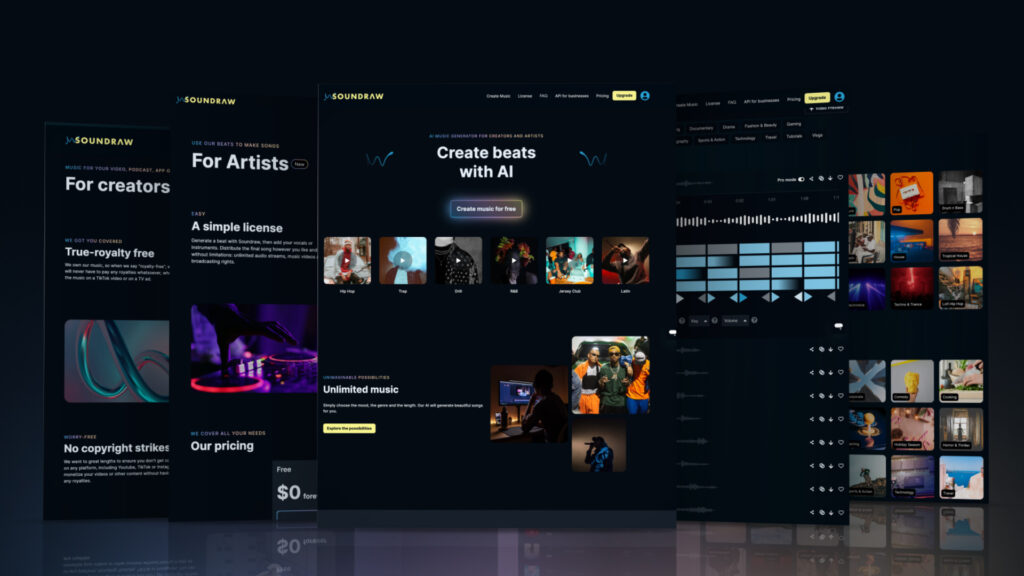
Soundraw offers one of the better free tiers available. The platform lets you generate melody ideas with an intuitive interface that doesn’t overwhelm beginners.
Key Features:
- Genre selection includes pop, rock, electronic, cinematic, and more specific subcategories
- Mood controls allow you to specify energy levels and emotional tone
- Tempo adjustment ranges from slow ambient to fast-paced electronic
- Instrument selection lets you choose which sounds carry your melody
- Length customization works for short clips or longer compositions
The free version limits monthly downloads and adds watermarks to exports. However, the generation quality matches paid alternatives. Many users start with the free tier to test whether AI melody generation fits their workflow before upgrading.
Pros:
- Intuitive interface requires no music theory knowledge
- High-quality output suitable for commercial projects
- Genre variety covers most common musical styles
- Fast generation allows rapid exploration of ideas
Cons:
- Free version has significant download limitations
- Less control over specific note choices compared to professional tools
- Style templates can feel somewhat generic
2. Boomy
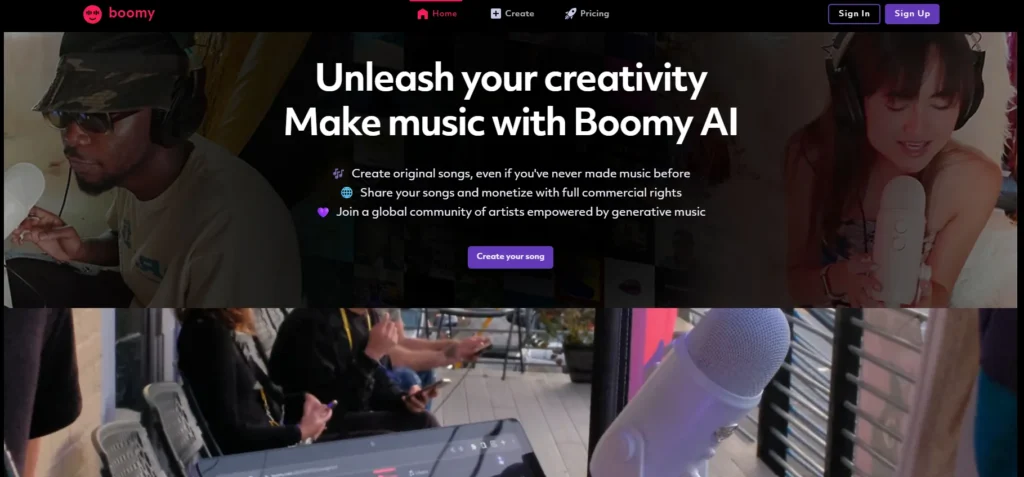
Boomy focuses on speed over depth. You can create complete songs with melodic elements in under a minute. The platform targets social media creators who need quick content.
Key Features:
- One-click generation requires minimal input from users
- Style templates cover popular genres like lo-fi hip hop, electronic dance, and acoustic pop
- Auto-arrangement adds drums, bass, and harmonies to your melody
- Mobile app allows melody creation on smartphones and tablets
- Social sharing features let you post directly to streaming platforms
The trade-off is less control over specific melodic details. You get usable results fast, but customization options are limited compared to more complex tools. Boomy works best for rapid ideation and background music needs.
Pros:
- Extremely fast generation creates complete songs in seconds
- Mobile app enables creation anywhere
- No music knowledge required
- Social sharing features streamline content posting
Cons:
- Limited customization options
- Output can sound generic
- Less suitable for professional productions
- Melodic control is minimal
3. AIVA (Free Tier)
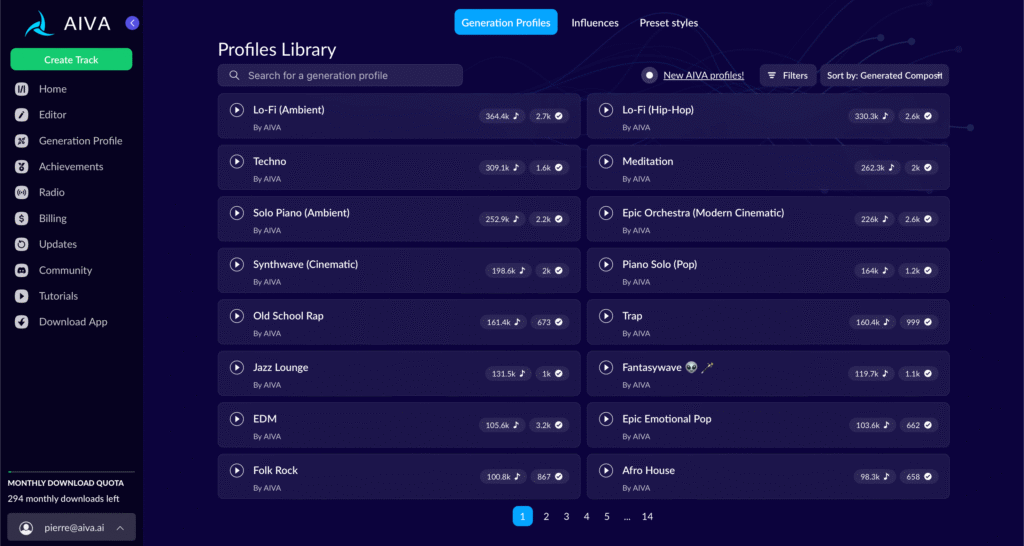
AIVA provides a limited free plan that gives you access to professional-grade melody generation. The platform originally targeted film composers but now serves broader audiences.
Key Features:
- Classical and cinematic styles are particularly strong in AIVA’s output
- Influence models let you guide generation based on specific composers or periods
- MIDI export provides note data you can edit in any music software
- Duration control allows short motifs or longer complete compositions
- Key and time signature selection ensures compatibility with existing projects
The free tier restricts commercial use and limits monthly creations. Personal projects and portfolio work remain unrestricted. Many music students use AIVA to study compositional techniques by analyzing its generated melodies.
Pros:
- Professional-grade output suitable for film and game soundtracks
- Strong in classical and cinematic styles
- MIDI export allows detailed editing in DAWs
- Educational value for studying composition
Cons:
- Steeper learning curve than simpler tools
- Free version restricts commercial use
- Interface feels complex for beginners
4. Beatoven.ai
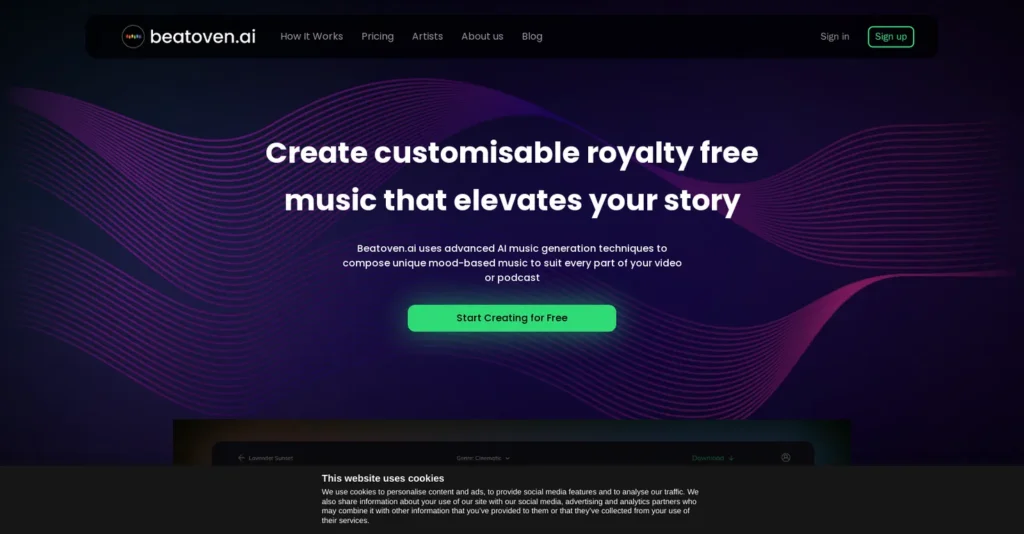
Beatoven.ai entered the market focusing on video content creators. The platform generates melodies that sync well with visual media.
Key Features:
- Scene-based composition allows different moods for video sections
- Real-time preview syncs audio with video uploads
- Emotion selection includes nuanced options like “contemplative” or “adventurous”
- Genre mixing combines multiple styles in single compositions
- Stem separation lets you isolate and modify melodic elements
The free version allows limited exports per month but provides full access to generation capabilities. YouTube creators particularly appreciate Beatoven’s understanding of how music supports visual storytelling
5. Amper Music
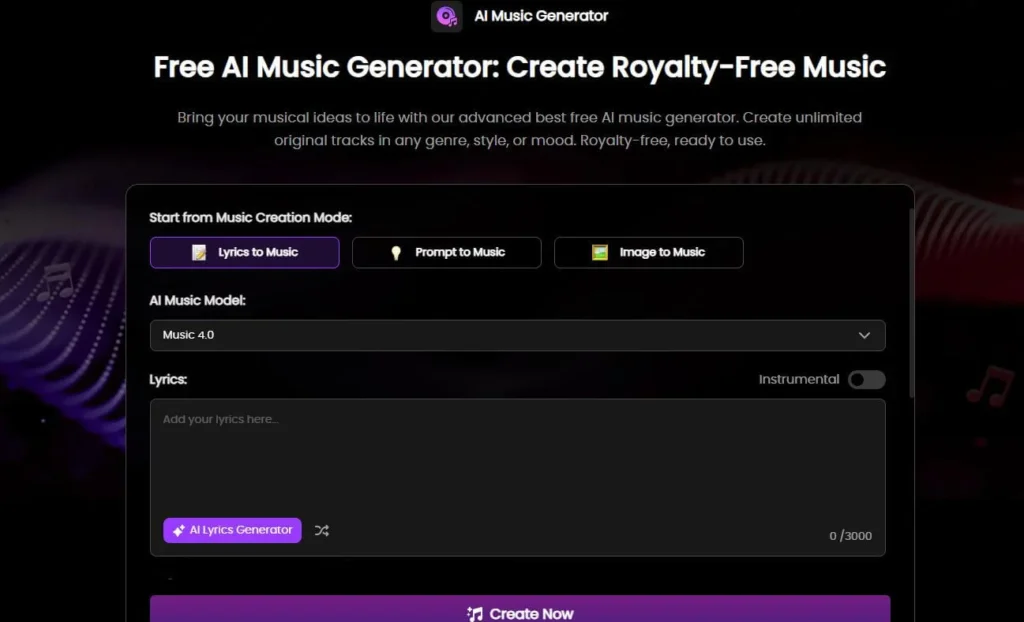
Amper Music provides basic melody generation through a straightforward interface. The platform works well for beginners who want to experiment without complexity.
Key Features:
- Template-based creation simplifies the generation process
- Duration matching ensures music fits specific time requirements
- Mood library includes common emotional categories
- Instrument selection offers standard options like piano, guitar, and synthesizers
- Simple editing allows basic adjustments without music theory knowledge
Export options in the free tier are limited, but quality remains consistent. Many users employ Amper for podcast intros and outro music where length requirements matter more than deep customization.
For More Details Look Into: Top 7 AI Music Generator Tools to Inspire Creativity
Premium AI Melody Generator Tools
Paid tools justify their cost through advanced features, better audio quality, and commercial licensing. Professional applications typically require these upgraded capabilities.
1. Soundful

Soundful’s paid tiers unlock extensive customization options. The platform serves intermediate to advanced users who need precise control.
Key Features:
- Advanced harmonic controls let you specify chord progressions and voice leading
- Genre-specific parameters adjust generation based on style conventions
- Tempo and key modulation allows changes within single compositions
- Multiple version generation creates variations of the same melodic idea
- Stem export separates melody, harmony, bass, and percussion tracks
The melody AI maker capabilities here include voice leading options that ensure smooth transitions between notes. Professional producers use Soundful during the initial composition phase when exploring melodic directions.
2. Mubert
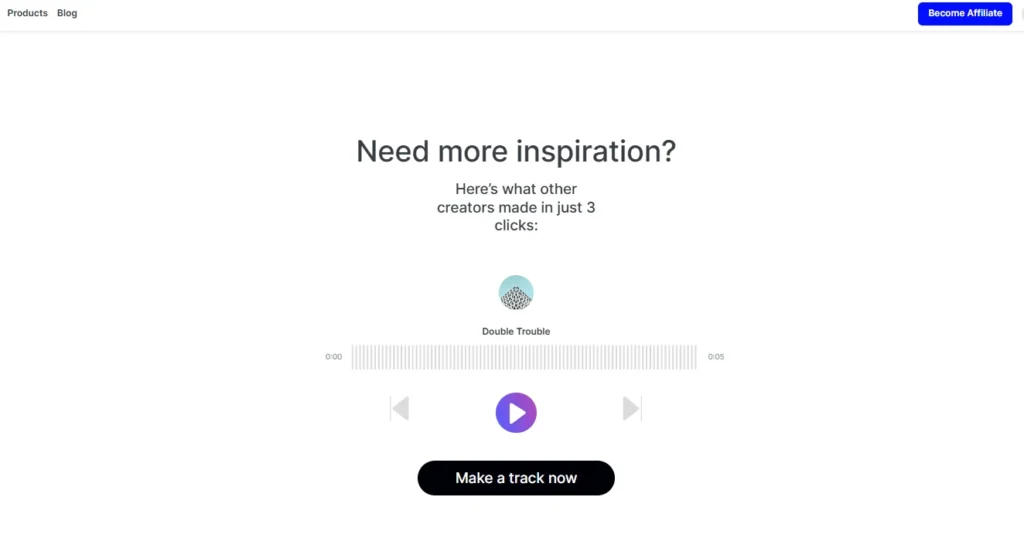
Mubert operates on a subscription model with tiers for different use cases. The platform excels at creating original melodies without copyright concerns.
Key Features:
- Duration-specific generation creates music for exact time requirements
- API access enables integration with custom applications
- Style blending combines multiple genres in cohesive compositions
- Real-time generation allows unlimited melody creation
- Commercial licensing comes standard with paid subscriptions
Content creators value Mubert’s ability to generate unique music that avoids copyright claims. The AI vocal melody generator features integrate well with vocal tracks, making it useful for singers and rappers.
Pros:
- Excellent for avoiding copyright issues
- API access enables custom integrations
- Duration-specific generation fits exact timing needs
- Consistent quality across generations
Cons:
- Subscription required for most features
- Less control over specific melodic elements
- Better for background music than feature compositions
3. MuseNet by OpenAI
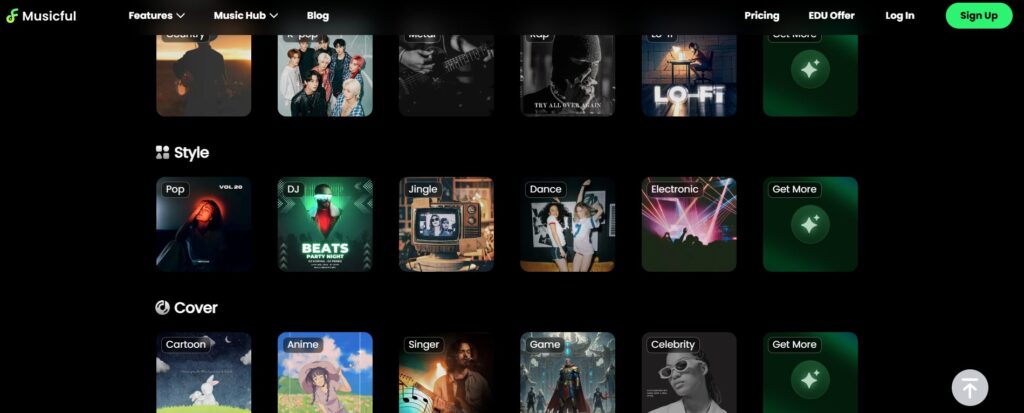
MuseNet represents the research-oriented end of AI melody generation. The platform combines different musical styles in ways other tools cannot.
Key Features:
- Style fusion merges baroque with jazz, classical with electronic, and other unexpected combinations
- Long-form composition creates extended pieces maintaining thematic consistency
- Instrument variety includes both traditional and synthesized sounds
- Complexity control ranges from simple melodies to intricate polyphonic passages
- Educational value helps users understand compositional techniques
While not purely commercial, MuseNet offers powerful capabilities for experimental music creation. Composers exploring unconventional approaches find inspiration in its unexpected melodic choices.
4. Splash Pro
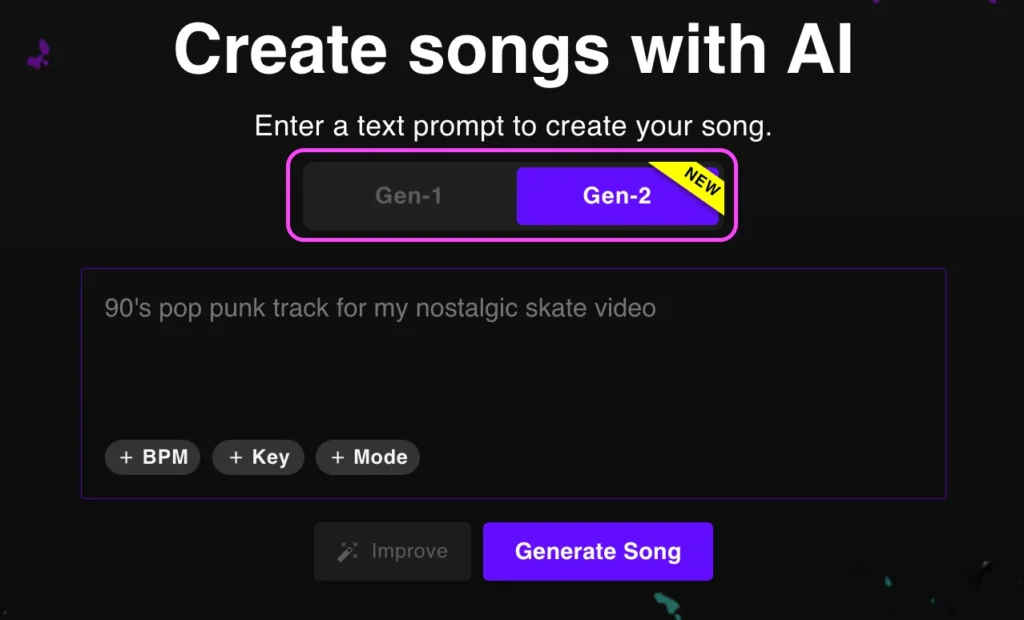
Splash Pro targets social media creators with a mobile-first approach. The platform understands the specific needs of short-form content.
Key Features:
- Quick iteration allows rapid testing of multiple melodic ideas
- Mobile interface optimizes creation on smartphones and tablets
- Social platform integration enables direct posting to TikTok, Instagram, and YouTube
- Loop-friendly generation creates seamless repeating melodies
- Trend-aware suggestions recommend styles matching current popular content
The AI song melody generator works exceptionally well for 15-60 second clips. Many TikTok creators rely on Splash Pro for original audio that helps videos stand out.
5. MelodyStudio
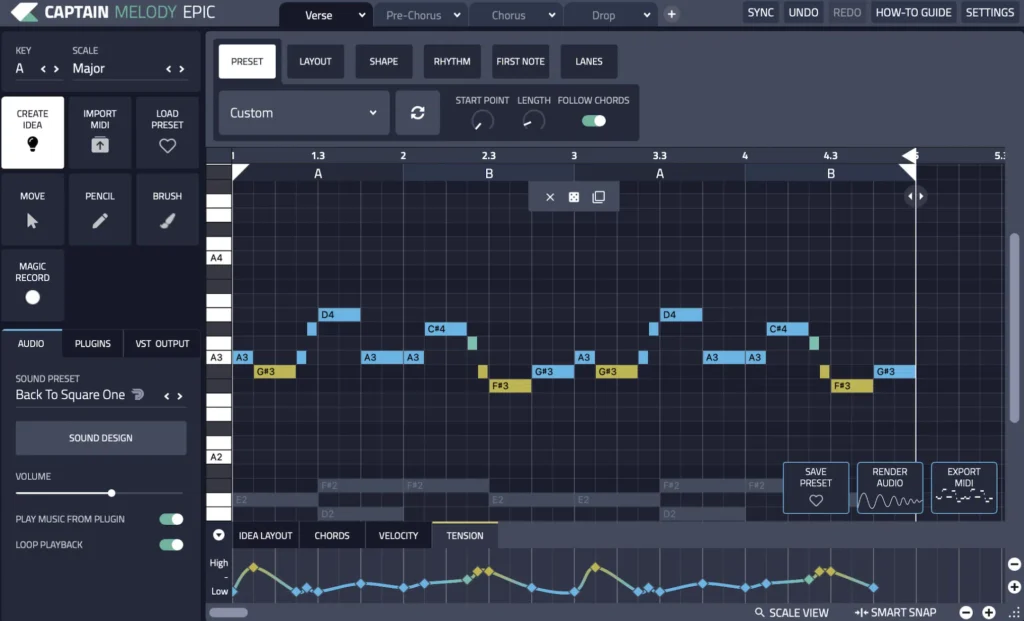
MelodyStudio specializes in converting lyrics into singable melodies. The platform understands prosody and natural speech patterns better than general-purpose tools.
Key Features:
- Syllable mapping analyzes text structure and creates matching rhythms
- Multiple options generation provides varied melodic interpretations of the same lyrics
- Section combination allows mixing different generated segments
- Vocal range consideration ensures melodies fit human singing capabilities
- Lyric phrasing respects natural language rhythms and emphasis
Songwriters struggling with melody composition find MelodyStudio particularly valuable. The tool handles the technical challenge of matching notes to syllables while maintaining musical interest.
Pros:
- Excellent for converting lyrics to melodies
- Multiple option generation provides variety
- Understands vocal range and singability
- Specifically designed for songwriters
Cons:
- Focused only on vocal melodies, not instrumental
- Requires existing lyrics as input
- Less useful for instrumental composition
Comparison of Top AI Melody Generators
| Tool | Best For | Melody Quality | Ease of Use | Customization | Commercial Use |
| Soundraw | Content creators needing background music | High | Very Easy | Moderate | Yes (paid) |
| AIVA | Classical and cinematic compositions | Very High | Moderate | High | Limited (free), Yes (paid) |
| Boomy | Quick social media content | Moderate | Very Easy | Low | Yes (with restrictions) |
| Soundful | Professional producers | High | Moderate | Very High | Yes (paid) |
| Mubert | Copyright-free content creation | High | Easy | Moderate | Yes (paid) |
| MelodyStudio | Lyric-based melody creation | High | Easy | Moderate | Yes |
| Beatoven.ai | Video content creators | High | Easy | Moderate | Limited (free), Yes (paid) |
| Splash Pro | Social media short-form content | Moderate | Very Easy | Low | Yes (with attribution) |
What Actually Matters Among Free vs. Paid
Free and paid tools have differences extending beyond mere feature counts. Knowing these differences guides you in selecting the right level of investment. Free utilities commonly cap export amounts, limit business use, or compromise audio quality. They are valuable for personal projects and testing. Watermarks or branding on exports are commonly employed by free sites. Generation limits per month compel you to choose which creations to download.
Paid subscriptions eliminate these limits and introduce professional capabilities. You receive commercial licensing permissions, unlimited exports, and priority processing. Advanced customization capabilities are found only in paid plans. These include certain mood controls, style mixing, and longer length abilities.
The pragmatic distinction appears most obviously in workflow drag. Free tools cause you to hesitate before coming up with ideas, whereas paid subscriptions make you more likely to experiment. This sense of freedom tends to create improved creative results because you try out more alternatives without fear of constraints.
Specialized Vocal Melody Generators
Vocal melody creation presents unique challenges. The melody must be singable with appropriate range, breathing points, and natural phrasing. Modern AI vocal melody generator tools account for human vocal capabilities. They avoid extreme pitch jumps, include natural pause points, and create melodies that feel comfortable to perform. This consideration separates vocal generators from general melodic tools.
- Vocaloid has incorporated AI features into recent versions. While primarily a vocal synthesis tool, the AI melody suggestions help users create more natural-sounding vocal lines. The system understands vocal range limitations and suggests melodies real singers can actually perform.
- Synthesizer V includes voice melody generation that creates expressive vocal melodies. The platform considers factors like vibrato placement, dynamics, and articulation. Results sound remarkably human, especially when using AI-powered voice databases.
These specialized tools prove particularly valuable for singer-songwriters who struggle with melody writing but have strong lyrical abilities. The AI bridges the gap between words and music, handling technical challenges while preserving creative intent.
Real-World Applications of AI Melody Generators
AI melody generators serve diverse creative needs across multiple industries. Understanding practical applications helps identify which features matter most.
- Content creators use these tools for background music in videos, podcasts, and streams. The ability to quickly create unique soundtracks without copyright concerns proves invaluable. YouTube creators particularly value the speed and originality these tools provide.
- Songwriters employ AI generators to overcome creative blocks. When struggling with a particular section, they generate multiple melodic options and select promising directions. Many professional songwriters use AI as a collaborative partner rather than a replacement for human creativity.
- Game developers integrate AI-generated melodies into soundtracks and adaptive music systems. The ability to quickly generate numerous variations suits game audio needs perfectly. Some developers use AI to create procedural music responding to gameplay events.
- Advertisers require original music for commercial campaigns. AI melody generators provide affordable alternatives to commissioning custom compositions. Clear commercial licensing and style customization make these tools practical for marketing applications.
- Music educators use these tools to demonstrate compositional concepts. Students can hear different melodic approaches instantly, accelerating learning. The technology makes advanced compositional techniques accessible to beginners.
Getting Better Results from AI Melody Generators
Experience with these tools reveals optimization strategies that consistently improve output quality. These practical tips apply across most platforms.
- Provide clear constraints rather than completely open-ended requests. Specify key, tempo, mood, and style preferences. Constrained generation paradoxically produces more usable results than unlimited options. The AI works better when guided by specific parameters.
- Generate multiple variations before committing to a single melody. Most tools create different outputs each run. Generating five to ten options gives you selection power and often reveals unexpected creative directions. The first generation is rarely the best option.
- Edit and humanize outputs rather than using them directly. AI-generated melodies often benefit from small adjustments adding human feel. Slight timing variations, velocity changes, and occasional note substitutions make generated melodies sound less mechanical.
- Combine AI sections with human composition for best results. Use AI for difficult transitions or when stuck on particular sections. Maintain human control over overall structure and emotional arc. The best compositions blend AI assistance with human creative direction.
- Learn from the AI by analyzing why certain generated melodies work well. This reverse-engineering approach improves your understanding of melodic construction. Many users report becoming better composers through studying AI-generated examples.
Integration with Music Production Software
Professional music production occurs mainly in DAWs such as Ableton Live, FL Studio, Logic Pro, and Pro Tools. Seamless integration with these products defines functional usability for serious producers. Most AI melody generators will output MIDI files that are compatible with all major DAWs. This generic format allows for the preservation of note information without baking in particular choices of sound. Producers can then use the MIDI on any virtual instrument within their DAW.
https://bedroomproducersblog.com/free-vst-plugins/Some of the platforms provide direct plugin integration. Orb Producer Suite is installed as VST/AU plugins in your DAW. The smooth workflow eliminates application bouncing. The AI chord and melody generator features operate directly on your project timeline. Native Instruments has integrated AI melody functions into Komplete Kontrol. Users create melodic concepts without ever having to leave their DAW setting. This integration comes naturally and does boost workflow significantly.
The movement toward more integrated DAWs keeps accelerating. Look for more native implementations as AI functionality becomes a normal production feature instead of a standalone tool.
Common Challenges and Solutions
All users are faced with systematic challenges while beginning with AI melody generators. Expecting such challenges heightens your learning curve.
- Generic-sounding output annoys most starters. The fix is to offer more specific inputs and bounds. Rather than asking for “a sad melody,” define “a melancholy piano melody in E minor, tempo 70 BPM, descending contour.”
- The toughness of editing MIDI prevents some from fine-tuning AI results. Spending time on the fundamentals of MIDI editing reaps huge rewards. Even basic knowledge of piano roll editors enables making simple yet effective adjustments.
- Overdependence on AI creates stagnation of creativity. Balance AI helps with your own compositional growth. Utilize generated melodies as ideas instead of a finished product. Taper dependence as skills increase.
- Free tools’ technical limitations are frustrating. Ask yourself if a small paid subscription would fix recurring issues. The increased productivity usually makes the small expenditure worthwhile.
- Analysis paralysis from too many options paralyzes decision-making. Set a generation limit, perhaps three variations, then choose one and commit. Perfectionism kills more projects than imperfect execution.
Future of AI Melody Generators
The technology quickly evolves with a number of distinct development paths apparent for future years.
- Real-time collaboration between humans and AI will become standard. Instead of generating static melodies, future tools will respond dynamically to your playing. This interactive approach transforms AI from a tool to a creative partner.
- Emotional intelligence in AI composition continues to advance. Upcoming systems will more effectively model and reproduce complex emotional states. Sentiment analysis of lyrics will evolve further, yielding increasingly emotionally appropriate melodies.
- Personalization via user preference learning will tailor outputs to personal tastes. The AI will learn your previous choices and revisions, slowly adjusting to your writing style. This customized method generates outputs that need less revision in the long run.
- Integration with other AI applications will produce end-to-end creative suites. Melody generation will integrate perfectly well with lyric generation, arrangement AI, and mixing assistants. Finished songs will result from collaborative AI systems with minimal human effort.
- Accessibility enhancements will further democratize music composition. Voice commands, gestural interfaces, and streamlined workflows will make music composition possible for individuals without formal musical education.
Frequently Asked Questions
Can AI melody generators create truly original music?
Yes, modern AI melody generators create genuinely original compositions. The melodies are not copied from existing songs but generated based on musical patterns learned during training. However, you should still check significant portions against existing music databases before commercial release, as coincidental similarities can occasionally occur.
Do I need music theory knowledge to use these tools?
No formal music theory is required for basic use. Most platforms work with simple inputs like mood, genre, or lyrics. However, understanding basic concepts like key, tempo, and chord progressions helps you get better results and edit outputs more effectively.
Are AI-generated melodies royalty-free for commercial use?
This depends entirely on the specific platform. Most paid subscriptions grant full commercial rights to generated content. Free tools often restrict commercial use or require attribution. Always read the terms of service carefully before using AI-generated melodies in commercial projects.
Which tool works best for complete beginners?
Boomy and Soundraw are excellent starting points for absolute beginners. Both offer intuitive interfaces requiring no musical knowledge. They guide you through simple choices and generate complete musical ideas quickly.
Can these tools create singable vocal melodies?
Yes, specialized AI vocal melody generators create melodies designed for human voices. They consider vocal range limitations, natural phrasing, and comfortable intervals. Tools like MelodyStudio specifically focus on creating singable melodies from lyrics.
